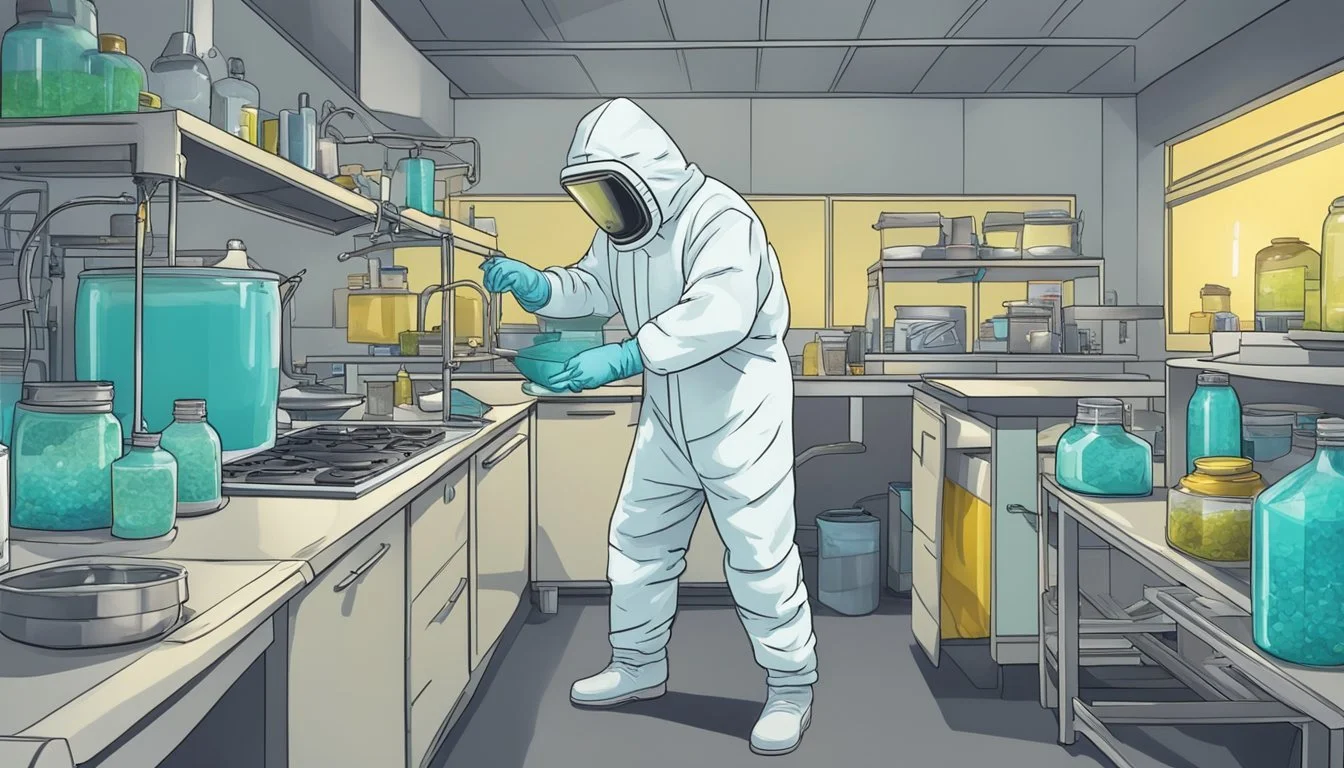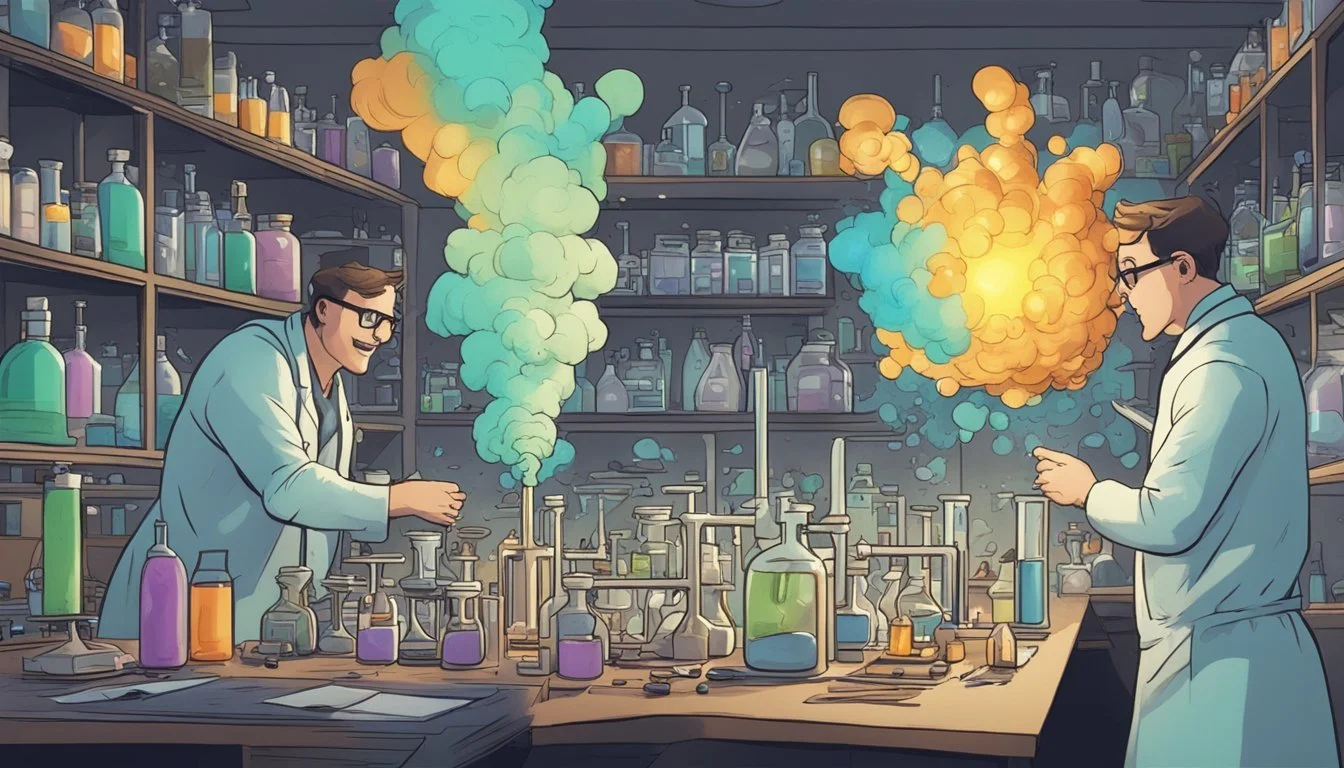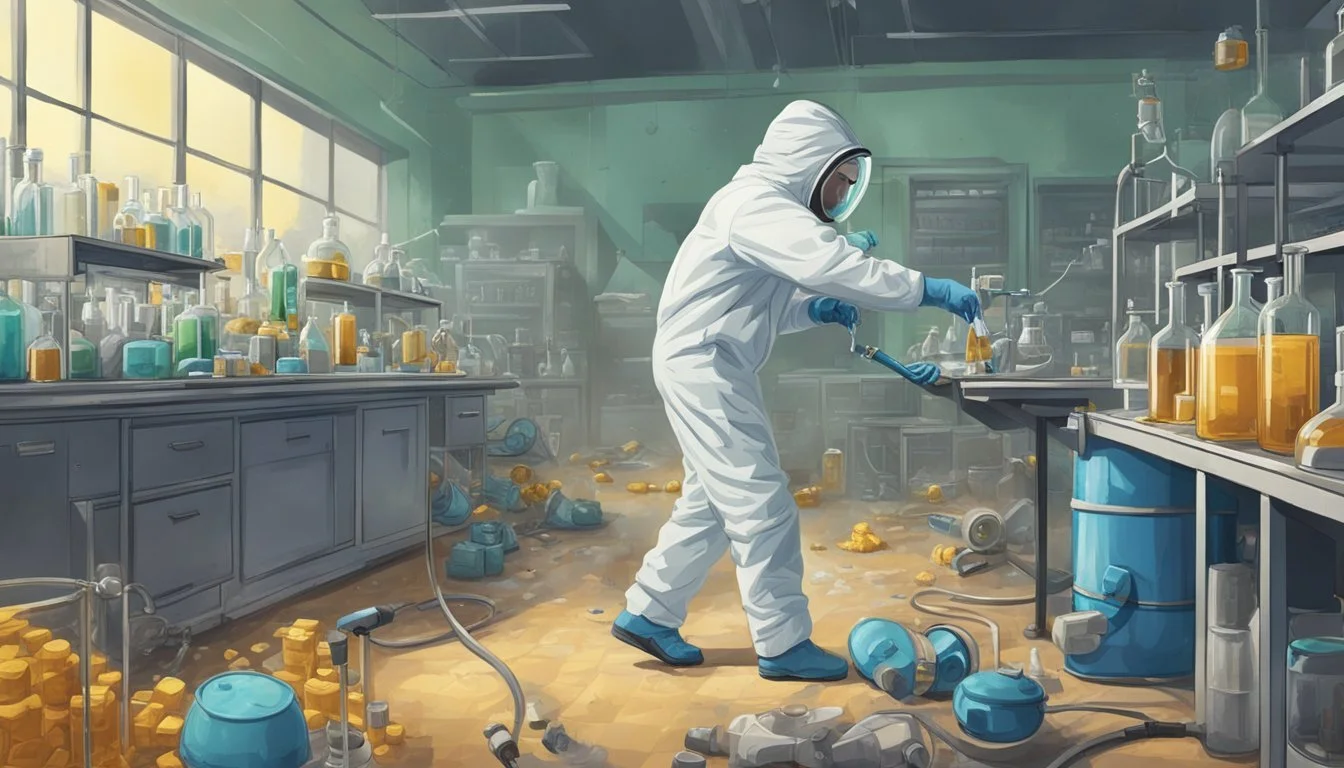Breaking Bad's Use of Irony: When Plans Backfire
Unintended Consequences in Walter White's Journey
Breaking Bad, the critically acclaimed AMC drama created by Vince Gilligan, masterfully employs irony to heighten tension and subvert audience expectations. The show's narrative often revolves around carefully crafted plans that spectacularly unravel, leaving characters to face unforeseen consequences.
Throughout the series, irony serves as a powerful storytelling device, highlighting the unpredictable nature of the criminal underworld and the futility of trying to control one's fate. Walter White's transformation from a mild-mannered chemistry teacher to a ruthless drug lord is rife with ironic twists, as his attempts to secure his family's future repeatedly endanger them.
The use of irony in Breaking Bad extends beyond plot elements to character development and thematic exploration. It underscores the moral decline of its protagonists and the cyclical nature of crime and punishment. By consistently subverting expectations, the show keeps viewers on edge, never quite certain of the outcome until the final moments unfold.
Breaking Bad: An Overview
Breaking Bad chronicles the transformation of Walter White from a mild-mannered chemistry teacher to a ruthless drug lord. The series captivated audiences with its gripping storytelling and complex characters over five seasons set in Albuquerque, New Mexico.
Creation and Conception
Vince Gilligan created Breaking Bad, drawing inspiration from his own experiences and the changing landscape of television. The show's premise emerged from Gilligan's desire to explore the concept of a protagonist becoming an antagonist. Walter White's character was conceived as a man facing a terminal cancer diagnosis who turns to manufacturing methamphetamine to secure his family's financial future.
The pilot episode, which aired in 2008, introduced viewers to White's mundane life and the catalyst for his drastic career change. Gilligan's vision for the series was to take Mr. Chips and turn him into Scarface, a transformation that would unfold gradually over the course of the show.
Critical Acclaim and Impact
Breaking Bad quickly established itself as one of the greatest shows in television history. The series garnered widespread critical acclaim for its exceptional writing, acting, and character development. Bryan Cranston's portrayal of Walter White earned him four Emmy Awards for Outstanding Lead Actor in a Drama Series.
The show's impact extended beyond awards and accolades. It redefined the antihero archetype and raised the bar for serialized storytelling. Breaking Bad's success paved the way for more complex, morally ambiguous narratives on television.
Critics praised the show's attention to detail, from its cinematography to its use of symbolism. The series finale, which aired in 2013, drew 10.3 million viewers and cemented Breaking Bad's place in pop culture history.
Character Analysis and Irony
Breaking Bad's characters embody complex personalities that often contradict their own intentions and values. This creates rich opportunities for irony as their actions frequently lead to unintended consequences.
Walter White's Transformation
Walt's journey from mild-mannered chemistry teacher to ruthless drug kingpin epitomizes irony. His initial goal of providing for his family after death ironically destroys the very thing he sought to protect. As Heisenberg, Walt gains power but loses his humanity.
His cancer diagnosis, meant to be a death sentence, paradoxically gives him a new lease on life. Walt's scientific expertise, once used to educate, becomes a tool for manufacturing illegal drugs. His actions, justified as necessary evils, gradually erode his moral compass.
Walt's relationship with Jesse evolves from teacher-student to a toxic partnership. The man who started cooking meth to secure his family's future ends up alone, having lost everything he valued.
Jesse Pinkman's Journey
Jesse's character arc is rife with ironic twists. Initially portrayed as a slacker and small-time drug dealer, he develops a stronger moral code than his mentor, Walt. Jesse's attempts to break free from the drug world repeatedly pull him back in deeper.
His relationship with Jane leads to tragedy when his addiction indirectly causes her death. Walt's inaction during this event ironically strengthens their partnership while sowing seeds of future conflict.
Jesse's efforts at redemption often backfire. His attempt to distribute free, high-quality meth to rehab patients exemplifies his misguided good intentions. His desire for family and normalcy is continuously thwarted by his criminal activities.
The Moral Complexity of Skyler White
Skyler's character challenges viewers' perceptions, embodying the irony of breaking bad for good reasons. Initially positioned as a moral counterpoint to Walt, she gradually becomes complicit in his crimes.
Her involvement in Ted's tax fraud ironically mirrors Walt's illegal activities. Skyler's efforts to protect her family by cooperating with Walt ultimately contribute to its downfall. Her role in managing the car wash business becomes a cruel parody of legitimate entrepreneurship.
Skyler's character highlights the show's exploration of moral relativism. Her actions, while often pragmatic, blur the lines between right and wrong, echoing the series' central themes.
Gus Fring: The Antagonist with a Mask
Gus Fring personifies dramatic irony, with his public persona completely at odds with his true nature. His role as a respected businessman and philanthropist provides the perfect cover for his drug empire.
The fastidious attention to detail that makes Gus a successful businessman ironically leads to his downfall. His meticulous planning fails to account for Walt's unpredictability. Gus's Los Pollos Hermanos restaurant chain serves as a brilliant front, ironically using a family-friendly business to mask his criminal activities.
Gus's calm demeanor and businesslike approach to the drug trade contrast sharply with the violence inherent in his profession. His carefully cultivated image is literally blown away in his final scene, revealing the monster beneath.
Irony in Plot Development
Breaking Bad masterfully employs irony to subvert character expectations and drive the narrative in unexpected directions. The show's plot twists often emerge from characters' well-laid plans going awry in surprising ways.
Expectation vs. Reality
Walt's initial foray into meth production aims to secure his family's financial future. Instead, it destroys the very relationships he sought to protect. His cancer diagnosis, meant to be a death sentence, ironically extends his life through remission. The DEA's hunt for Heisenberg leads them on a wild goose chase, while the mastermind sits right under their noses.
Hank Schrader's relentless pursuit of justice backfires spectacularly. His obsession with catching Heisenberg blinds him to Walt's true identity for years. When he finally uncovers the truth, it's too late to prevent his own downfall.
Consequences and Repercussions
Walt's actions frequently result in unintended consequences. His attempt to poison Tuco with ricin fails, but the poison later becomes a crucial plot device. The plane crash over Albuquerque, indirectly caused by Jane's death, weighs heavily on Walt's conscience.
The iconic "crawl space" scene exemplifies dramatic irony. As Walt breaks down in manic laughter, the audience knows his fate is sealed while he remains oblivious. This moment marks a turning point in Walt's descent into villainy.
Hector Salamanca's revenge against Gus Fring in "Face Off" showcases poetic justice. Gus's meticulous planning crumbles in an instant, undone by an unlikely alliance between sworn enemies.
Unforeseen Outcomes
The show's final season, particularly "Ozymandias" and "Granite State," delivers a series of ironic twists. Walt's empire, built on lies and manipulation, collapses spectacularly. His ill-gotten gains become useless as he hides in isolation.
Jesse's arc is riddled with tragic irony. His attempts to break free from the drug world only entangle him further. The creators use visual symbolism, like reflections and broken objects, to emphasize these ironies.
The cousins' relentless pursuit of vengeance leads to their own demise. Their intimidating presence serves as a stark contrast to their ultimate fate at Hank's hands.
Symbolism and Motifs
Breaking Bad masterfully employs visual symbolism and recurring motifs to enrich its storytelling. These elements foreshadow events, reveal character traits, and underscore the show's themes.
Color and Costume
Colors play a crucial role in Breaking Bad's visual language. Walt's wardrobe evolves from beige to green, reflecting his growing greed and transformation into Heisenberg. Skyler often wears blue, symbolizing loyalty and sadness. Marie's obsession with purple hints at her desire for luxury and royalty.
The show uses pink to represent innocence and loss. The iconic pink teddy bear from the plane crash serves as a haunting symbol of collateral damage from Walt's actions.
Yellow appears in scenes of danger or caution, like the hazmat suits worn during cook sessions. Red signifies violence and blood, frequently seen in Tuco's outfits and Jesse's car.
Objects as Symbolic Elements
Certain objects in Breaking Bad carry deep symbolic meaning. The fly Walt obsesses over represents his guilt and loss of control. The recurring image of an eyeball, whether from the pink teddy bear or Gus Fring's damaged face, symbolizes judgment and the consequences of one's actions.
The ricin capsule serves as a Chekhov's gun throughout the series, embodying Walt's calculated approach to violence. Burnt or damaged objects, like Gus's face after the explosion, visually represent moral decay and corruption.
Walt's hat transforms him into Heisenberg, symbolizing his alter ego and growing confidence in the drug trade. These carefully chosen elements add layers of meaning to the narrative, rewarding attentive viewers.
Breaking Bad's Cinematic Techniques
Breaking Bad's visual style elevates the storytelling through masterful cinematography and sound design. The show's distinct aesthetic choices create a unique atmosphere that enhances the narrative and character development.
Camera Work and Framing
Breaking Bad's cinematography, led by Michael Slovis from season 2 onward, employs innovative techniques to create a visual masterpiece. The show frequently uses wide-angle lenses to capture Albuquerque's vast desert landscapes, emphasizing the characters' isolation. Unique point-of-view shots, like those from inside a car trunk or a lab beaker, immerse viewers in the action.
Symbolism plays a crucial role in framing. The pilot episode establishes a visual language that carries through to the final episodes. Characters are often framed through doorways or windows, suggesting confinement or moral ambiguity. The iconic "crawl space" shot in "Ozymandias" exemplifies this technique, visually representing Walt's descent into madness.
Sound Design and Score
Breaking Bad's audio landscape is as meticulously crafted as its visuals. The show's sound design enhances tension and atmosphere, from the eerie silence of the desert to the claustrophobic echoes of the underground lab. Ambient sounds are carefully selected to ground scenes in reality while heightening emotional impact.
The musical score, composed by Dave Porter, blends southwestern-inspired themes with electronic elements. It evolves alongside the characters, growing darker and more intense as the series progresses. Memorable themes, like the one associated with the cousins in "Granite State," add depth to characters without dialogue. The use of diegetic music, such as "Crystal Blue Persuasion" during a meth-cooking montage, further enriches the auditory experience.
Audience Reception and Cultural Impact
Breaking Bad achieved widespread critical acclaim and left an indelible mark on popular culture. Its innovative storytelling and complex characters resonated deeply with viewers and critics alike.
Critical Reception and Reviews
Breaking Bad garnered universal praise from critics throughout its run. The series consistently received high ratings on review aggregator sites. Many critics hailed it as one of the greatest television shows ever made.
The final season, particularly the episode "Ozymandias," earned perfect scores from numerous reviewers. Critics praised the show's tight writing, cinematic visuals, and stellar performances. Bryan Cranston and Aaron Paul received multiple Emmy Awards for their portrayals of Walter White and Jesse Pinkman.
Reviewers often highlighted the show's exploration of morality and its unflinching look at the consequences of choices. The series' ability to balance tension, drama, and dark humor was frequently commended.
Breaking Bad in Popular Culture
Breaking Bad's impact extended far beyond critical circles, permeating popular culture in numerous ways. The show inspired countless memes, parodies, and references in other media.
Catchphrases like "I am the one who knocks" and "Say my name" became instantly recognizable. The iconic yellow hazmat suits worn by Walter and Jesse emerged as popular Halloween costumes.
The series sparked discussions about complex anti-heroes in television drama. It influenced subsequent shows in terms of storytelling techniques and character development.
Breaking Bad's success also boosted tourism in Albuquerque, New Mexico, where the show was set and filmed. Fans flocked to locations featured in the series, including the car wash and Los Pollos Hermanos restaurant.
Legacy and Influence on Television
Breaking Bad transformed television storytelling and left an enduring impact on the medium. Its innovative approach to character development and cinematography set new standards for TV dramas.
Spin-offs and Continuations
The success of Breaking Bad spawned multiple spin-offs, expanding its universe. Better Call Saul, focusing on lawyer Saul Goodman's backstory, ran for six critically acclaimed seasons. El Camino: A Breaking Bad Movie provided closure for Jesse Pinkman's character arc.
These continuations maintained the high-quality storytelling and visual style established by the original series. They further explored beloved characters like Mike Ehrmantraut and Gustavo Fring, adding depth to the Breaking Bad mythos.
Influence on Television Writing and Production
Breaking Bad revolutionized TV writing with its complex character arcs and meticulous plotting. The transformation of Walter White from mild-mannered teacher to ruthless drug lord became a template for antihero narratives.
Vince Gilligan's attention to detail in both writing and visual storytelling raised the bar for TV production values. The show's cinematic style, including its iconic use of time-lapse photography and POV shots, influenced countless series that followed.
Breaking Bad's success also emboldened networks to take risks on unconventional stories and darker themes. It proved that challenging, morally ambiguous narratives could find both critical acclaim and commercial success on television.





